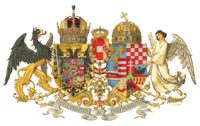- Count Johann Nepomuk Wilczek
-
Count (Graf) Johann Nepomuk (Hans) Wilczek (born on December 7, 1837 Vienna; d. January 27, 1922 in the same city) was an Austro-Hungarian sponsor of Polar expeditions and artists.
Young Hans Wilczek studied archaeology, art history and natural sciences. In 1863 he travelled to Russia, including Crimea and the Caucasus. Then, in 1866, he enlisted in the Austro-Prussian War as a volunteer. Between 1868 and 1870 he travelled across Africa.
Count Wilczek was the main sponsor of the Austro-Hungarian North Pole Expedition, led by Julius Payer and Karl Weyprecht from 1872 to 1874. He contributed with an amount that was significantly greater than the funds contributed by the second largest sponsor of the venture, Hungarian Count Ödon Zichy (1811–1894).
From 1875 onwards, Count Wilczek held the title of President of the Austrian Geographical Society in order to promote the construction of weather stations in the Arctic. The Austrian polar station on Jan Mayen Island was built and equipped in 1882 fully at his own costs.
As promoter of the fine arts, Count Wilczek was the founder of the "Viennese Society of Art Lovers" (Gesellschaft der Wiener Kunstfreunde).[1] He ordered the construction of Burg Kreuzenstein close to Vienna between 1874 and 1906. This monumental mansion is now a museum that houses his extensive art collections.
Wilczek Land and Wilczek Island, two islands in Franz Josef Land, were named after this Austrian Count.
References
Categories:- 1837 births
- 1922 deaths
- History of Austria
- Austro-Hungarian people
- Explorers of the Arctic
- Austrian people stubs
Wikimedia Foundation. 2010.


